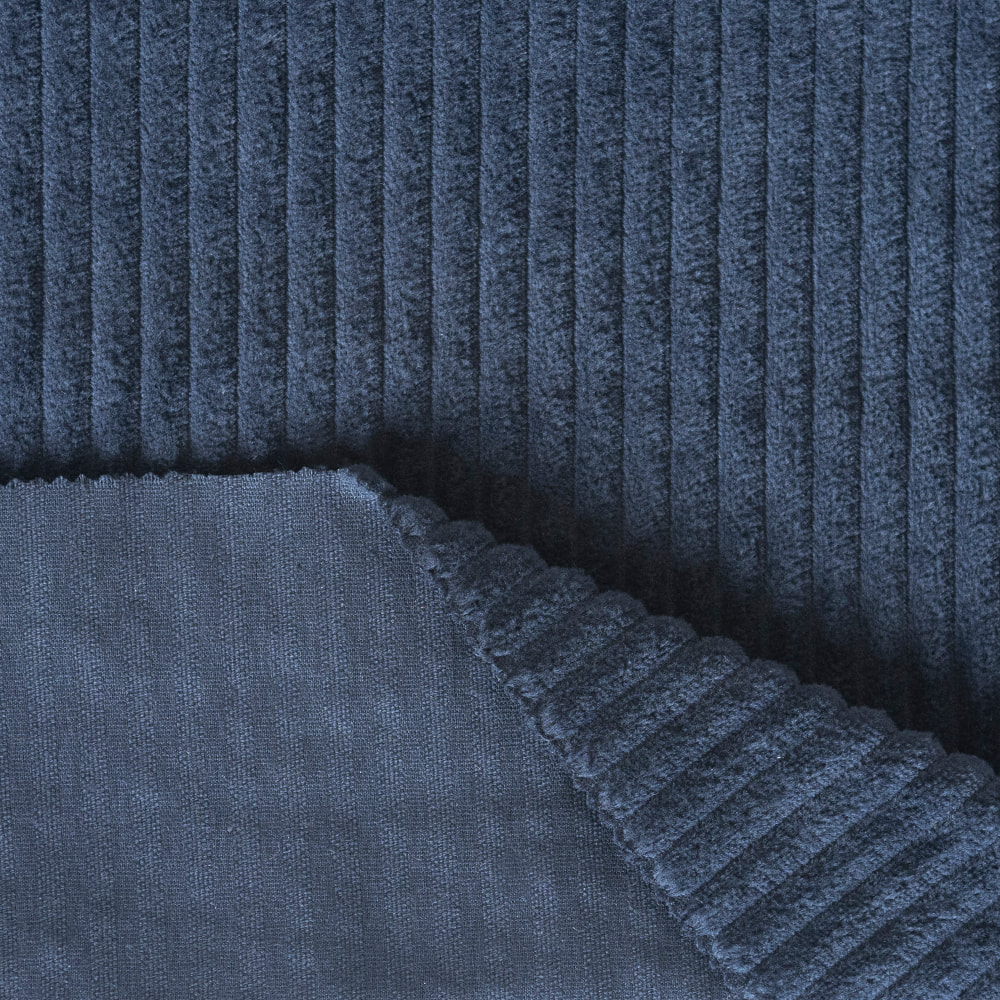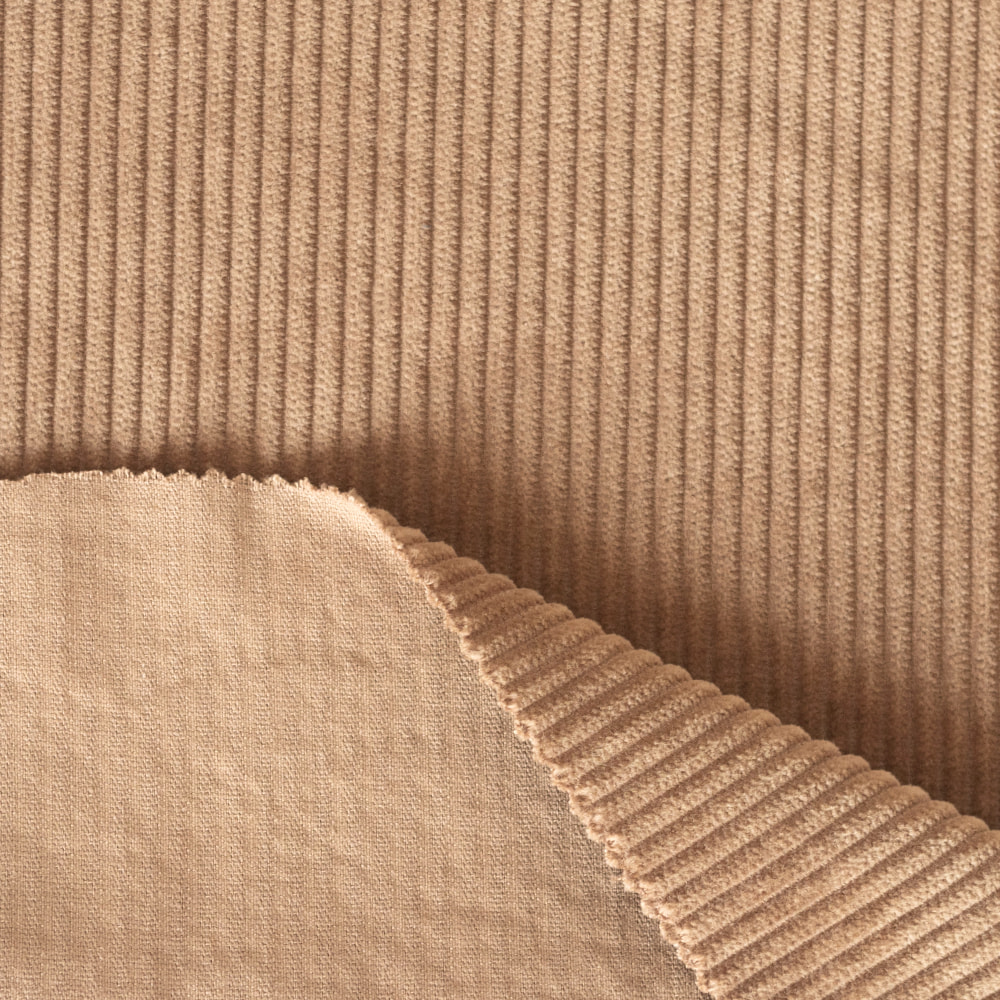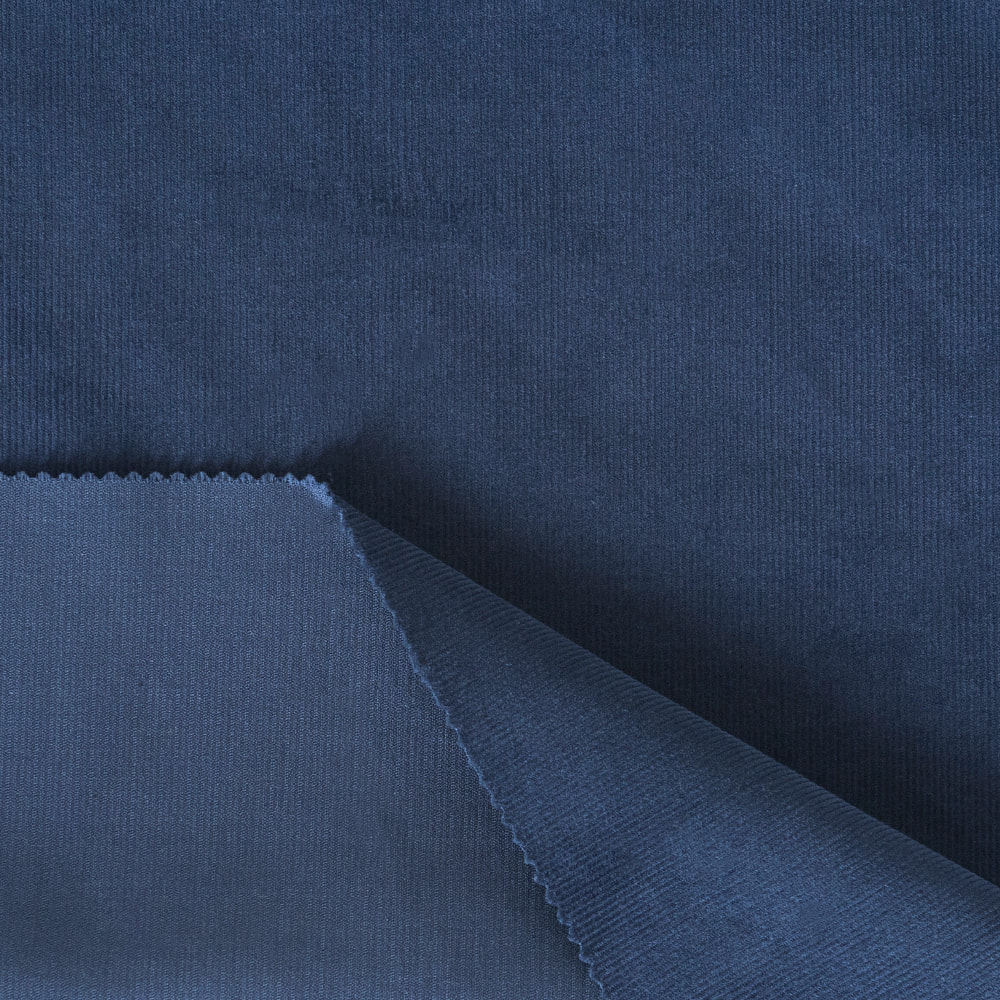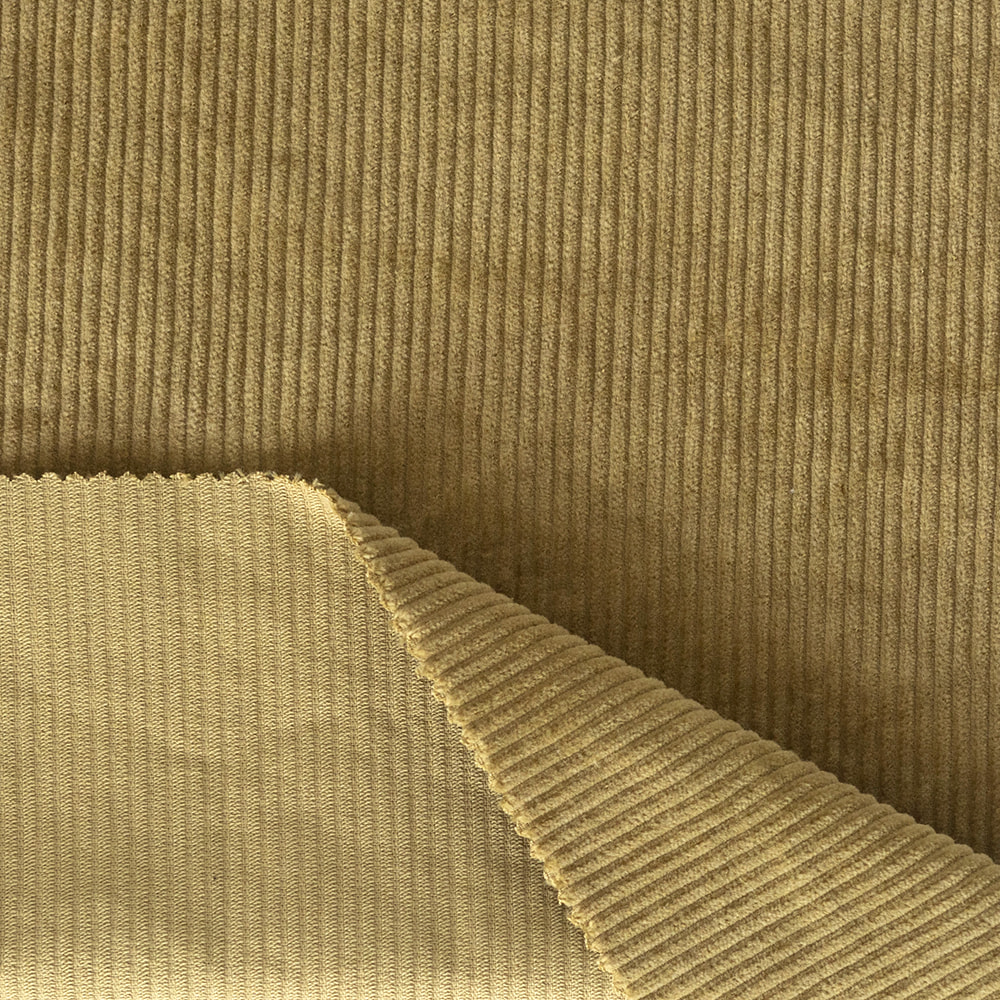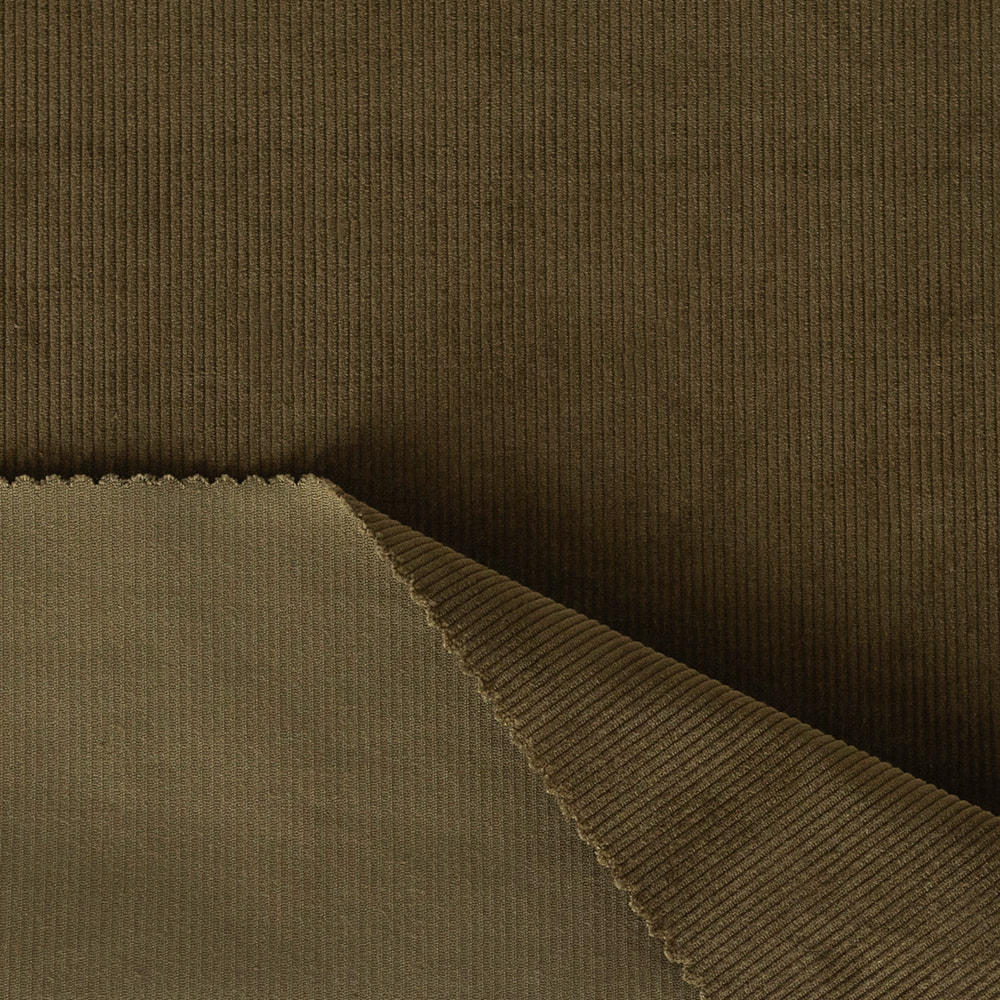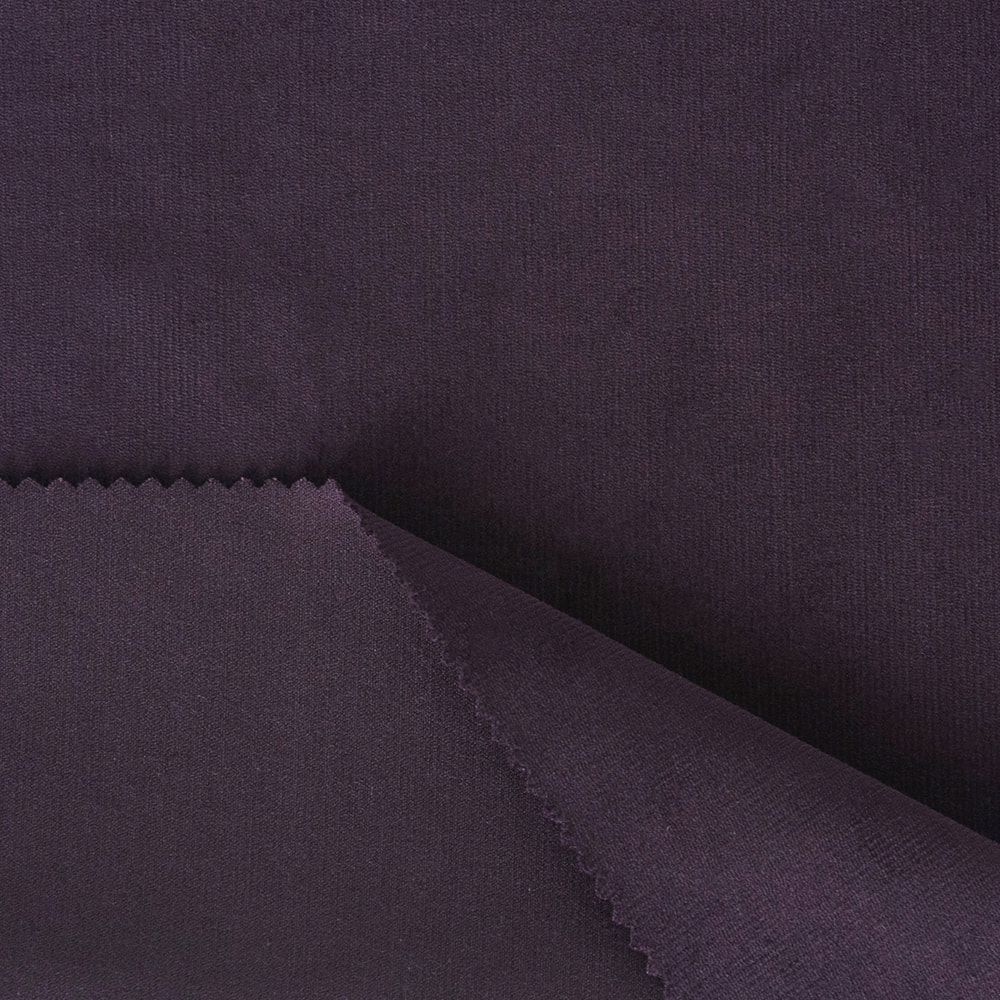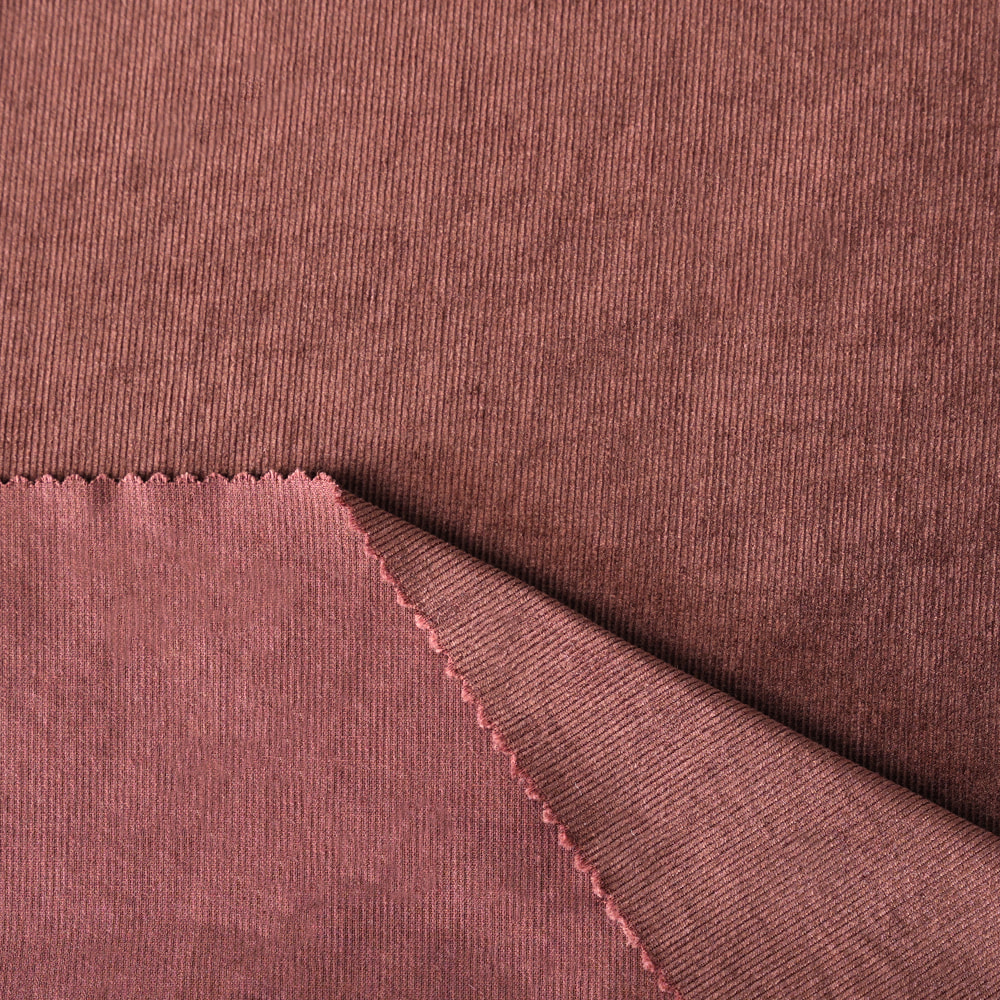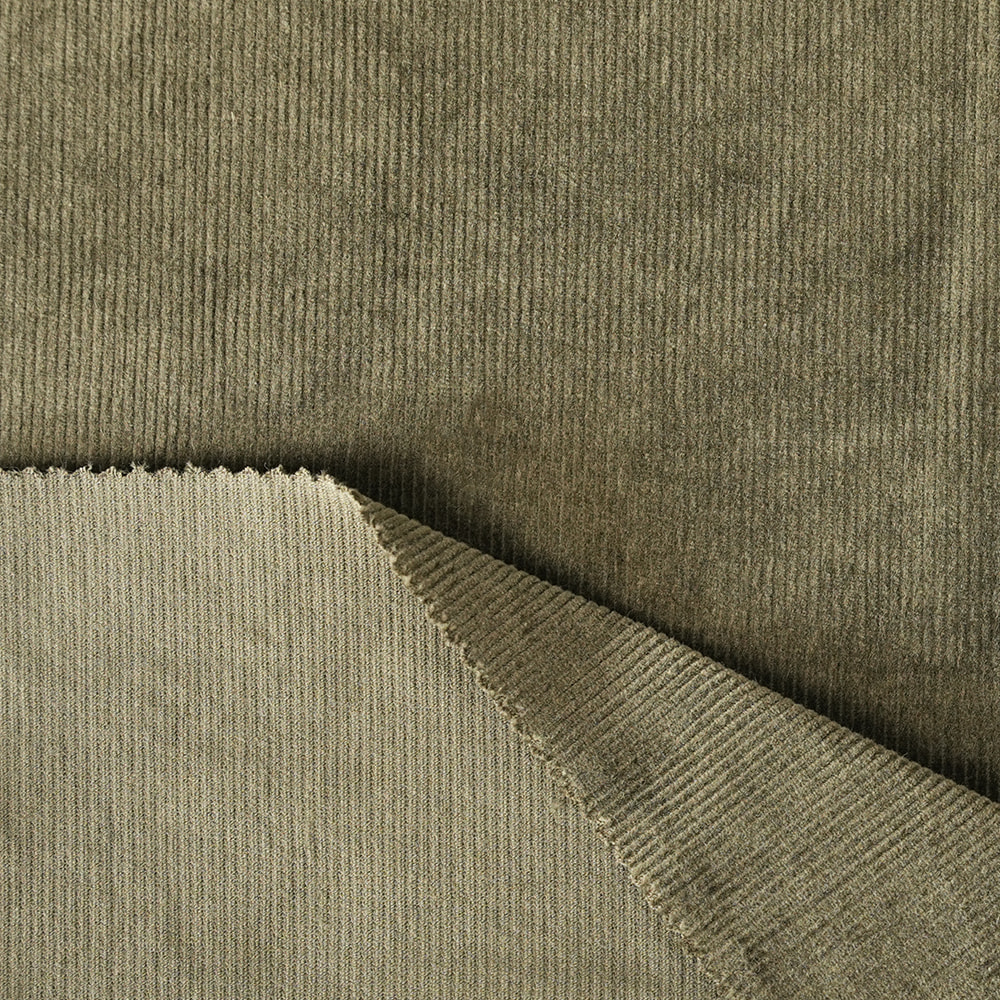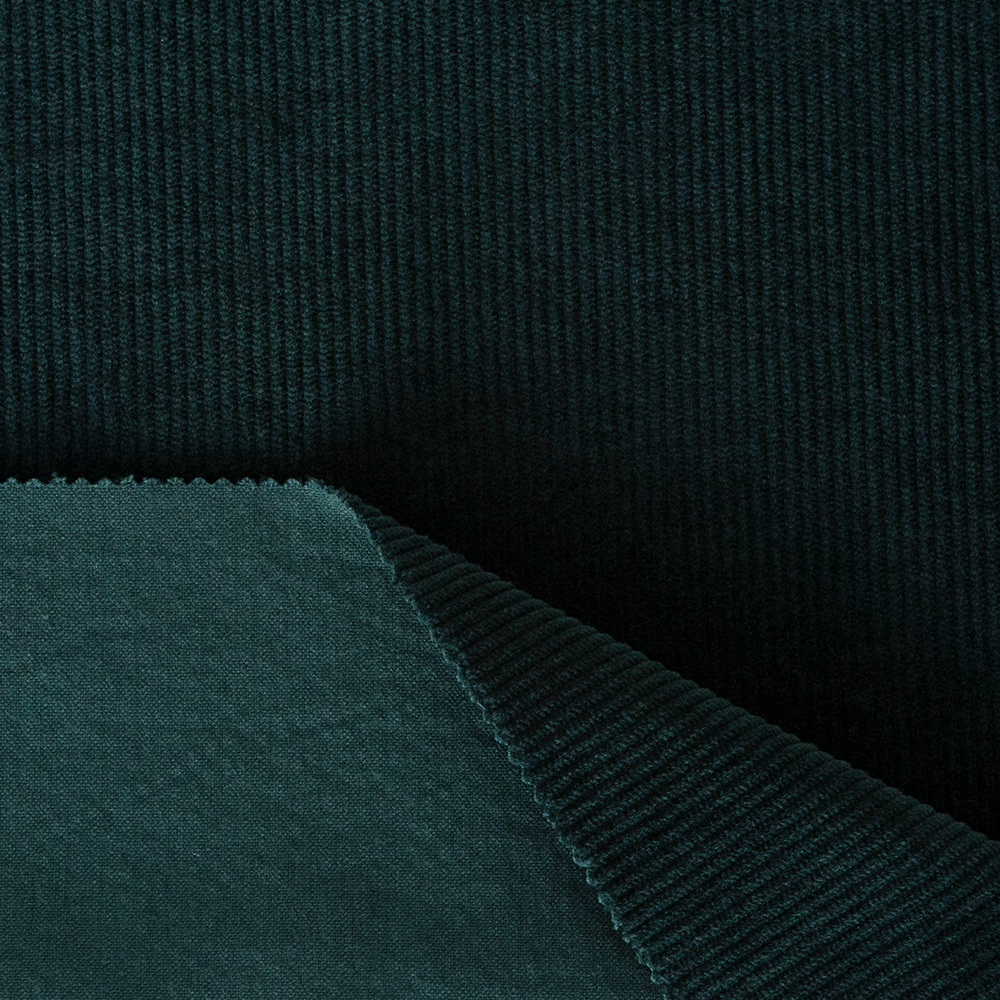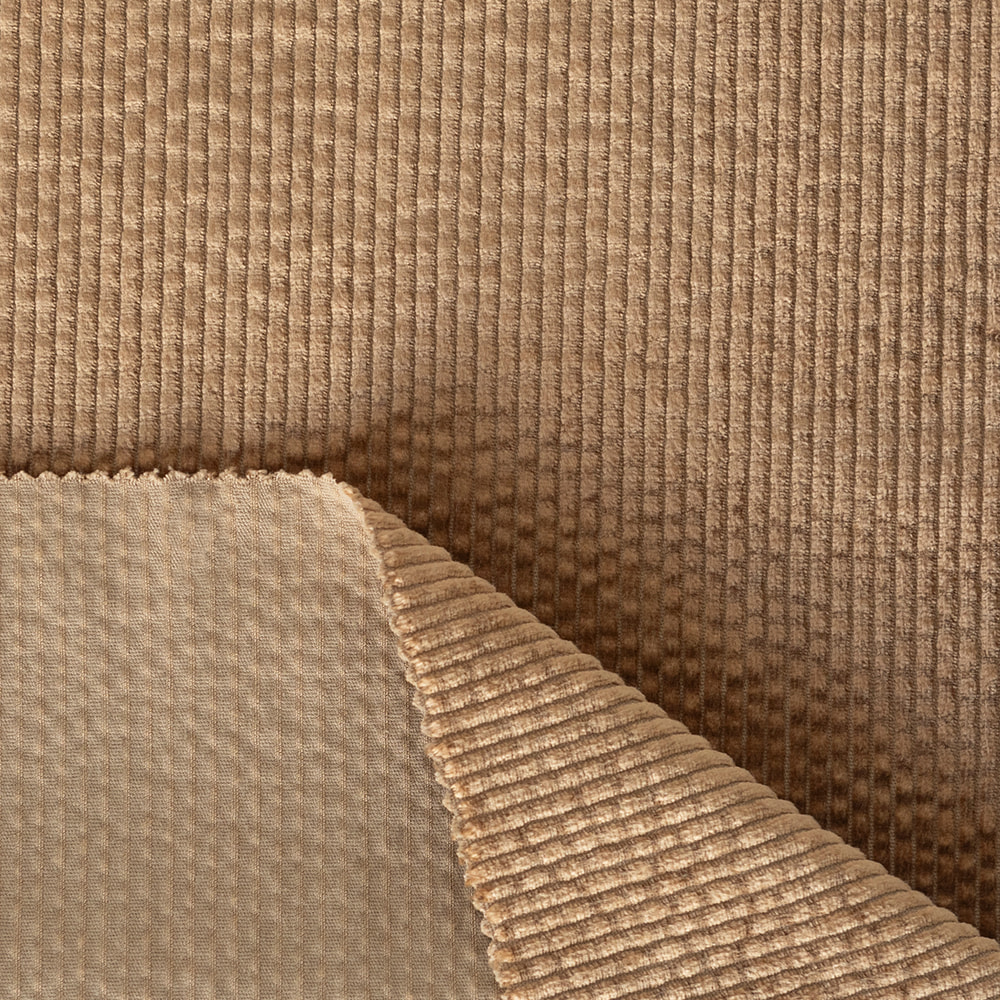Introduction to Tencel-Cotton Piece-Dyed Corduroy Fabric
Tencel-Cotton Piece-Dyed Corduroy Fabric is a modern textile innovation that combines the natural comfort of cotton, the silky softness of Tencel (lyocell), and the luxurious texture of corduroy. This hybrid fabric has become increasingly popular for apparel and home decor because it unites eco-friendly production with premium tactile appeal. Understanding how this fabric is made and what makes it unique can help designers, manufacturers, and consumers make informed choices.
Composition and Structural Features
The fabric is typically woven with a blend of Tencel fibers (a regenerated cellulose fiber derived from wood pulp) and cotton fibers (a natural plant-based staple). This blend delivers a perfect balance between softness, breathability, and durability. Corduroy’s signature ribbed texture, known as “wales,” is created by cutting and brushing the pile yarns after weaving, resulting in parallel ridges that provide both visual depth and warmth.
Key Material Properties
- Tencel (Lyocell): Known for its smooth hand feel, moisture-wicking ability, and biodegradability.
- Cotton: Provides structure, breathability, and a comfortable touch against the skin.
- Piece-Dyeing: Refers to dyeing the entire fabric after weaving, ensuring even, rich coloration across both fiber types.
What “Piece-Dyed” Means in Fabric Processing
In textile terminology, “piece-dyed” means that the fabric is dyed after it has been woven or knitted, as opposed to yarn-dyed or fiber-dyed fabrics. This method allows for greater flexibility in color selection and quicker response to fashion trends. In the case of Tencel-Cotton Corduroy, piece-dyeing helps achieve vibrant, uniform shades with minimal bleeding or fading.
Advantages of Piece-Dyeing for Tencel-Cotton Corduroy
- Ensures consistent color penetration across Tencel and cotton fibers.
- Reduces water and energy use compared to traditional dyeing sequences.
- Allows smaller production runs and more customized color options.
- Enhances the soft, matte finish typical of premium corduroy fabrics.
Characteristics and Performance Benefits
Tencel-Cotton Piece-Dyed Corduroy stands out for its combination of tactile comfort, ecological responsibility, and durability. Below is a summary of its primary performance characteristics:
| Property | Description |
|---|---|
| Softness | Exceptionally smooth and gentle due to Tencel’s fine fiber structure. |
| Breathability | Maintains airflow, reducing heat buildup even in thicker corduroy textures. |
| Moisture Management | Absorbs and releases moisture efficiently, keeping the wearer comfortable. |
| Strength | High tensile strength from both fibers makes the fabric long-lasting. |
| Eco-Friendliness | Tencel fibers are sourced from sustainably managed forests and use closed-loop processing. |
| Drape and Shape | Offers elegant drape with moderate stiffness suitable for structured garments. |
| Color Fastness | Piece-dyed coloration maintains vibrancy and resists fading through washing cycles. |
Applications of Tencel-Cotton Piece-Dyed Corduroy Fabric
Due to its balanced properties, this fabric finds applications across apparel, home decor, and design industries. Its soft ribbed surface, breathable feel, and dye versatility make it suitable for both functional and aesthetic purposes.
In Fashion and Apparel
- Casual wear: Jackets, skirts, and trousers benefit from its comfort and color richness.
- Children’s clothing: Hypoallergenic and gentle on skin, ideal for kids’ pants or overalls.
- Winter and transitional garments: Offers warmth without heaviness, perfect for fall collections.
- Eco-conscious brands: Appeals to consumers prioritizing sustainability and soft-touch fabrics.
In Interior and Lifestyle Products
- Upholstery: Adds a plush, textured aesthetic to furniture while maintaining breathability.
- Cushion covers and throws: Creates cozy and stylish decor pieces.
- Home accessories: Used in bags, curtains, or wall panels for a refined natural look.
Sustainability and Environmental Impact
One of the most appealing aspects of Tencel-Cotton Piece-Dyed Corduroy is its sustainable production profile. Tencel fibers are produced using a closed-loop process that recycles over 99% of solvents and minimizes water use. Cotton provides natural comfort but can be sourced from organic or Better Cotton Initiative (BCI) programs to further reduce environmental impact.
Eco-Friendly Features
- Biodegradable and compostable fiber content.
- Low energy dyeing process using fewer chemicals.
- Durability extends product lifespan, reducing textile waste.
- Compatible with eco-friendly finishes such as water-based repellents or enzyme washing.
Fabric Care and Maintenance
Proper care ensures that Tencel-Cotton Piece-Dyed Corduroy retains its luster, color, and softness. While durable, this fabric benefits from gentle handling due to its fine pile structure.
Recommended Care Instructions
- Machine wash on a gentle cycle with cold or lukewarm water.
- Use mild, non-alkaline detergent; avoid bleach or fabric softeners.
- Turn garments inside out before washing to protect the corduroy ribs.
- Air dry or tumble dry on low heat to prevent shrinkage or texture distortion.
- Iron on the reverse side using low heat if needed, or steam to restore pile.
Storage Tips
- Hang garments to preserve their shape and prevent crease marks on the ribs.
- Store in a cool, dry environment away from direct sunlight to prevent color fading.
- For long-term storage, use breathable cotton garment bags rather than plastic covers.
Comparison: Tencel-Cotton Corduroy vs. Traditional Cotton Corduroy
Understanding how this modern blend compares to traditional corduroy fabrics highlights its added value and performance benefits.
| Feature | Tencel-Cotton Corduroy | Traditional Cotton Corduroy |
|---|---|---|
| Softness | Superior silky touch with smoother pile | Coarser surface texture |
| Moisture Control | Excellent moisture absorption and release | Moderate moisture handling |
| Eco Impact | Lower water and chemical usage in fiber production | Higher water consumption in conventional cotton cultivation |
| Color Vibrancy | Rich and uniform dye uptake | Can appear slightly uneven post-dyeing |
| Wrinkle Resistance | Better drape and reduced creasing | More prone to wrinkling |
Buying Considerations
When sourcing or selecting Tencel-Cotton Piece-Dyed Corduroy for projects, consider the following factors to ensure you receive the best match for your application:
- Wale Count: Finer wales (16–21 per inch) are suitable for shirts and lightweight apparel; wider wales (8–12 per inch) are ideal for outerwear and upholstery.
- Blend Ratio: Typical blends range from 40%–60% Tencel to 40%–60% cotton, depending on desired softness or structure.
- Dye Type: Verify whether the dye used is reactive, vat, or pigment-based for the best colorfastness relative to use.
- Finishing Options: Enzyme washing, sand washing, or calendaring can modify texture and luster.
Conclusion
Tencel-Cotton Piece-Dyed Corduroy Fabric merges sustainable innovation with timeless comfort. Its superior softness, breathability, and ecological benefits make it an excellent choice for eco-conscious fashion brands and designers seeking modern versatility. Whether used in apparel, home furnishings, or accessories, this fabric delivers both aesthetic appeal and responsible performance — a perfect blend of nature, technology, and craftsmanship.

